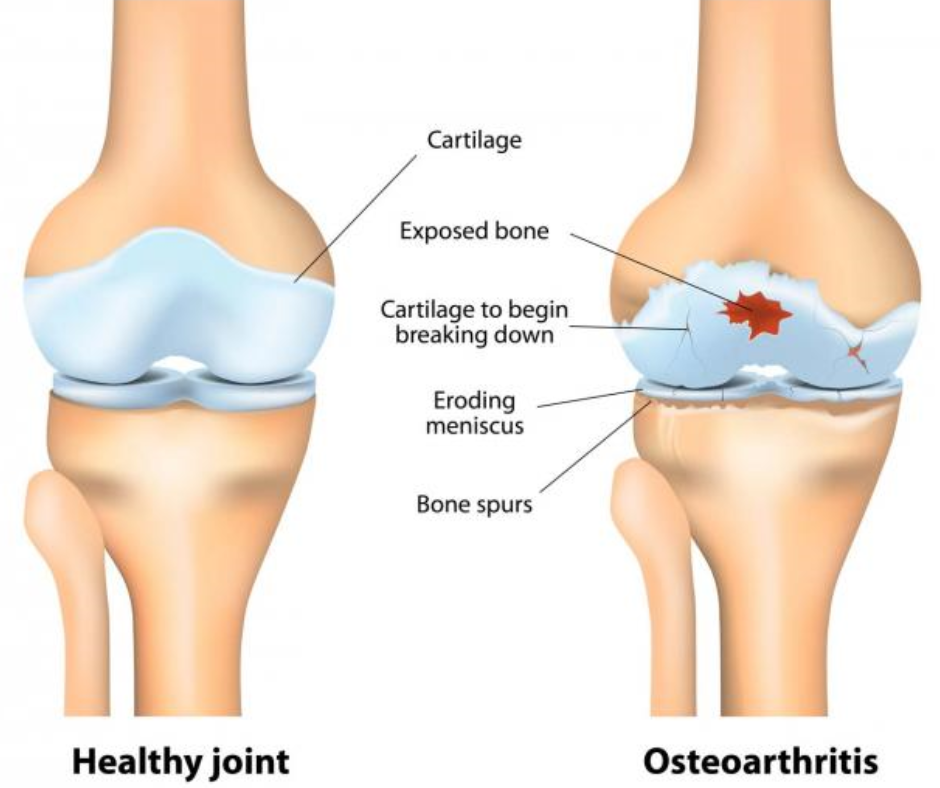Osteoarthritis (OA) is a degenerative joint disease that affects millions of people worldwide, causing pain, stiffness, and reduced mobility. One of the areas where OA commonly manifests is the knee joint, leading to significant discomfort and impaired quality of life. Traditional treatments for knee osteoarthritis include medications, physical therapy, and, in severe cases, surgical interventions like knee replacement. However, in recent years, there has been growing interest in an innovative and promising approach: stem cell therapy.
Understanding Knee Osteoarthritis
Before delving into stem cell therapy, it’s crucial to understand the underlying mechanisms of knee osteoarthritis. OA involves the breakdown of cartilage, the tissue that cushions the ends of bones within a joint. As the cartilage wears away, bones begin to rub against each other, causing pain, swelling, and stiffness. The condition can be triggered by factors such as aging, joint injuries, and obesity.
Traditional Treatments for Knee Osteoarthritis
Before exploring stem cell therapy, it’s essential to highlight the conventional treatments used for knee osteoarthritis.
- Medications:
- Nonsteroidal anti-inflammatory drugs (NSAIDs) for pain relief and inflammation control.
- Analgesics, including acetaminophen, to manage pain.
- Corticosteroid injections to reduce inflammation and pain.
- Physical Therapy:
- Exercises to strengthen the muscles around the knee.
- Range-of-motion exercises to improve joint flexibility.
- Aerobic exercises for overall joint health.
- Lifestyle Modifications:
- Weight management to reduce stress on the knee joints.
- Assistive devices like canes or braces for added support.
- Hot or cold therapy for pain relief.
- Surgical Interventions:
- Arthroscopy to remove damaged cartilage.
- Osteotomy to reposition bones and alleviate pressure on the joint.
- Total knee replacement for severe cases.
While these treatments can provide relief, they may not address the root cause of knee osteoarthritis, and in some cases, they might have limitations in terms of efficacy and long-term outcomes.
The Promise of Stem Cell Therapy
What are Stem Cells?
Stem cells are unique cells with the remarkable ability to develop into various cell types. They can divide and produce both identical stem cells (self-renewal) and specialized cells with specific functions (differentiation). In the context of knee osteoarthritis, the focus is often on mesenchymal stem cells (MSCs), which have the potential to differentiate into cartilage, bone, and other connective tissues.
How Stem Cell Therapy Works
Stem cell therapy involves harvesting stem cells from a patient’s own body or from other sources and then injecting them into the affected knee joint. The idea is that these cells can promote tissue repair and regeneration, potentially slowing down or reversing the progression of knee osteoarthritis.
- Harvesting Stem Cells:
- Autologous stem cells are obtained from the patient’s own body, typically from bone marrow or adipose (fat) tissue.
- Allogeneic stem cells come from a donor, either another person or a cell bank.
- Isolation and Processing:
- The harvested cells undergo isolation and processing to concentrate and purify the stem cell population.
- Injection into the Knee Joint:
- The concentrated stem cells are then injected into the knee joint, often guided by imaging techniques such as ultrasound.
- Differentiation and Repair:
- Once in the joint, the stem cells may differentiate into chondrocytes, the cells responsible for producing cartilage.
- The newly formed cartilage can potentially replace damaged tissue and improve joint function.
Types of Stem Cell Therapy
- Autologous Stem Cell Therapy:
- Utilizes the patient’s own stem cells, reducing the risk of immune rejection.
- Common sources include bone marrow and adipose tissue.
- Allogeneic Stem Cell Therapy:
- Involves stem cells from a donor.
- Requires compatibility matching to minimize the risk of rejection.
- Platelet-Rich Plasma (PRP) Therapy:
- Involves concentrating platelets from the patient’s blood.
- While not strictly stem cell therapy, PRP can stimulate tissue healing and may be used in conjunction with stem cell treatments.
Scientific Evidence and Clinical Studies
To assess the efficacy of stem cell therapy for knee osteoarthritis, numerous clinical studies have been conducted.
Clinical Trials and Research Findings
- A Randomized Controlled Trial by Centeno et al. (2018):
- This study investigated the use of bone marrow-derived stem cells in knee osteoarthritis.
- Results showed significant improvements in pain and function compared to the control group.
- Emadedin et al.’s Meta-analysis (2020):
- A meta-analysis of multiple studies concluded that stem cell therapy had a positive impact on knee function and reduced pain in patients with osteoarthritis.
- Yubo et al.’s Systematic Review (2017):
- This review assessed various types of stem cell therapies for knee osteoarthritis, including both autologous and allogeneic approaches.
- The authors reported favorable outcomes in terms of pain reduction and functional improvement.
While these studies suggest potential benefits, it’s crucial to note that more research is needed to establish the long-term safety and effectiveness of stem cell therapy for knee osteoarthritis.
Potential Advantages of Stem Cell Therapy
- Reduced Inflammation:
- Stem cells may have anti-inflammatory properties, helping to mitigate the inflammatory processes associated with osteoarthritis.
- Cartilage Regeneration:
- The differentiation of stem cells into chondrocytes could contribute to the regeneration of damaged cartilage.
- Minimized Risk of Rejection:
- Autologous stem cell therapy carries a lower risk of rejection since the cells come from the patient’s own body.
- Non-Invasive or Minimally Invasive:
- Stem cell injections are generally less invasive than surgical interventions, reducing the risks and recovery time.
- Potential to Delay or Avoid Surgery:
- Successful stem cell therapy may postpone or eliminate the need for more invasive surgical procedures.
Considerations and Challenges
Regulatory Landscape
- Lack of Standardization:
- The field of stem cell therapy lacks standardized protocols, leading to variations in treatment approaches.
- Regulatory Oversight:
- The regulatory landscape for stem cell therapy is evolving, and issues of safety and ethical concerns persist.
Clinical Considerations
- Patient Selection:
- Not all patients may be suitable candidates for stem cell therapy, and careful patient selection is crucial.
- Variable Outcomes:
- Responses to stem cell therapy can vary among individuals, and not all patients experience the same degree of improvement.
- Long-Term Safety:
- Long-term safety data are limited, and potential risks and side effects need further exploration.
Future Directions and Emerging Technologies
As researchers continue to explore the potential of stem cell therapy, several emerging technologies and trends are shaping the future of this field.
- Advancements in Cell Manufacturing:
- Improved techniques for isolating and expanding stem cells are enhancing the quality and consistency of cell-based therapies.
- Integration with Other Therapies:
- Combining stem cell therapy with other interventions, such as PRP or gene therapies, is a growing area of interest.
- Personalized Medicine Approaches:
- Tailoring stem cell treatments to individual patients based on genetic and molecular profiles may enhance therapeutic outcomes.
- Regulatory Standardization:
- Efforts to establish standardized regulatory frameworks will be crucial for ensuring the safety and efficacy of stem cell therapies.
Conclusion
Stem cell therapy holds great promise as a novel and potentially transformative approach to treating knee osteoarthritis. While early clinical studies indicate positive outcomes in terms of pain relief and functional improvement, more research is needed to establish the long-term safety and efficacy of these treatments. The evolving regulatory landscape and ongoing advancements in cell manufacturing and personalized medicine will likely play a significant role in shaping the future of stem cell therapy for knee osteoarthritis. As the field progresses, a comprehensive understanding of the benefits, challenges, and ethical considerations will be essential for clinicians, researchers, and patients alike.









